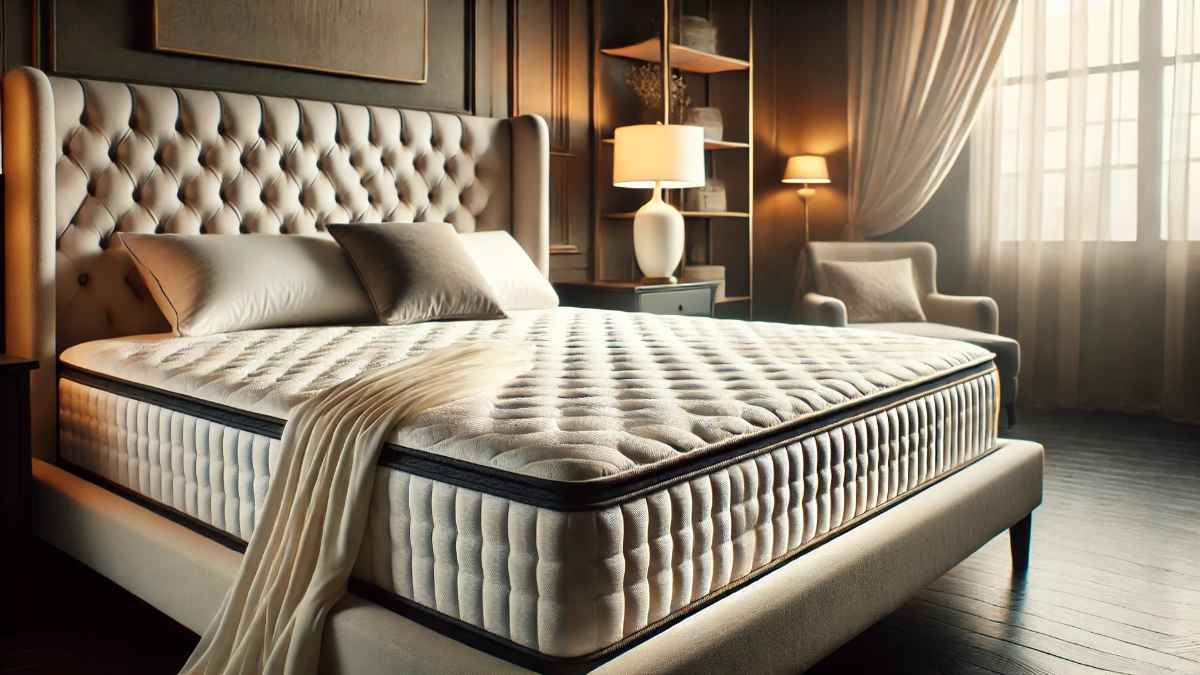Best Mattress Memory Foam Mattress: Ultimate 2025 Guide for Comfort & Support
Introduction
A good night’s sleep is essential for overall health, and choosing the best mattress memory foam mattress can make all the difference. With so many options available, understanding what makes memory foam mattresses stand out is crucial. In this guide, we’ll explore everything you need to know before making your purchase, from features and benefits to selecting the perfect mattress for your needs.
What Is a Memory Foam Mattress?
A memory foam mattress is made from viscoelastic foam that conforms to the body’s shape, providing optimal support and pressure relief. Originally developed by NASA, this material adapts to body heat and weight, ensuring a personalized sleeping experience.
Benefits of Memory Foam Mattresses
1. Superior Pressure Relief
Memory foam evenly distributes body weight, reducing pressure points and preventing aches and pains.
2. Motion Isolation
These mattresses absorb movement, making them ideal for couples by minimizing disturbances during sleep.
3. Spinal Alignment & Back Support
Memory foam molds to the spine’s natural curve, promoting healthy posture and reducing back pain.
4. Hypoallergenic & Dust Mite Resistant
Unlike traditional spring mattresses, memory foam prevents allergens, mold, and dust mites from accumulating.
5. Durability
High-quality memory foam mattresses last between 8-10 years, making them a great investment.
Types of Memory Foam Mattresses
1. Traditional Memory Foam
This type provides excellent contouring and support but may retain heat.
2. Gel-Infused Memory Foam
Gel-infused models offer cooling properties, preventing overheating during sleep.
3. Open-Cell Memory Foam
Designed with enhanced airflow, open-cell foam improves breathability and heat dissipation.
4. Hybrid Memory Foam
Combining memory foam with innerspring coils, hybrid models deliver support and comfort.
How to Choose the Best Memory Foam Mattress
1. Consider Firmness Level
- Soft: Ideal for side sleepers who need pressure relief.
- Medium: Best for combination sleepers seeking balance.
- Firm: Recommended for back and stomach sleepers needing extra support.
2. Check Density and Thickness
Higher density foam (4-5 lbs per cubic foot) lasts longer and offers better support.
3. Temperature Regulation Features
Opt for cooling gel, copper-infused foam, or open-cell technology for temperature control.
4. Motion Isolation & Edge Support
Couples should prioritize motion isolation, while edge support prevents sagging.
5. CertiPUR-US Certification
Ensure the mattress is free from harmful chemicals and safe for long-term use.
Best Memory Foam Mattresses in 2025
| Brand | Type | Firmness Level | Cooling Features | Price Range |
|---|---|---|---|---|
| Tempur-Pedic Tempur-Adapt | Traditional Memory Foam | Medium-Firm | Cooling Cover | $$$$ |
| Nectar Premier Copper | Gel-Infused Memory Foam | Medium | Copper Infused Gel | $$$ |
| Saatva Loom & Leaf | Eco-Friendly Memory Foam | Medium-Firm | Organic Cotton Cover | $$$$ |
| Casper Wave Hybrid | Hybrid Memory Foam | Medium | AirScape Technology | $$$ |
| Purple Hybrid Premier | Open-Cell Memory Foam | Medium-Soft | Hyper-Elastic Polymer Grid | $$$$ |
Pros and Cons of Memory Foam Mattresses
Pros
✔ Excellent pressure relief
✔ Motion isolation for undisturbed sleep
✔ Hypoallergenic and dust mite resistant
✔ Durable with long lifespan
✔ Supports spinal alignment
Cons
✖ Heat retention (unless cooling technology is present)
✖ Can be too soft for stomach sleepers
✖ Off-gassing odor initially present
✖ Heavy and difficult to move

FAQs About Memory Foam Mattresses
1. How long do memory foam mattresses last?
On average, a high-quality memory foam mattress lasts 8-10 years with proper care.
2. Are memory foam mattresses good for back pain?
Yes! Memory foam contours to your spine, providing support and pressure relief to alleviate back pain.
3. Do memory foam mattresses need a box spring?
No, they work well on platform beds, adjustable bases, and slatted frames without needing a box spring.
4. How do I clean a memory foam mattress?
Use a mild detergent, vacuum, and spot cleaning to maintain hygiene. Avoid excessive moisture.
5. Do memory foam mattresses sag over time?
Yes, lower-density foam may sag over time. Opt for high-density memory foam for longevity.
6. Can you flip a memory foam mattress?
Most memory foam mattresses are one-sided and should not be flipped. Instead, rotate every 3-6 months for even wear.
Conclusion
A memory foam mattress offers unparalleled comfort, support, and durability, making it an excellent investment for quality sleep. Whether you prioritize cooling technology, motion isolation, or back support, there’s a perfect mattress for everyone. Use this guide to make an informed decision and enjoy restful nights ahead!

